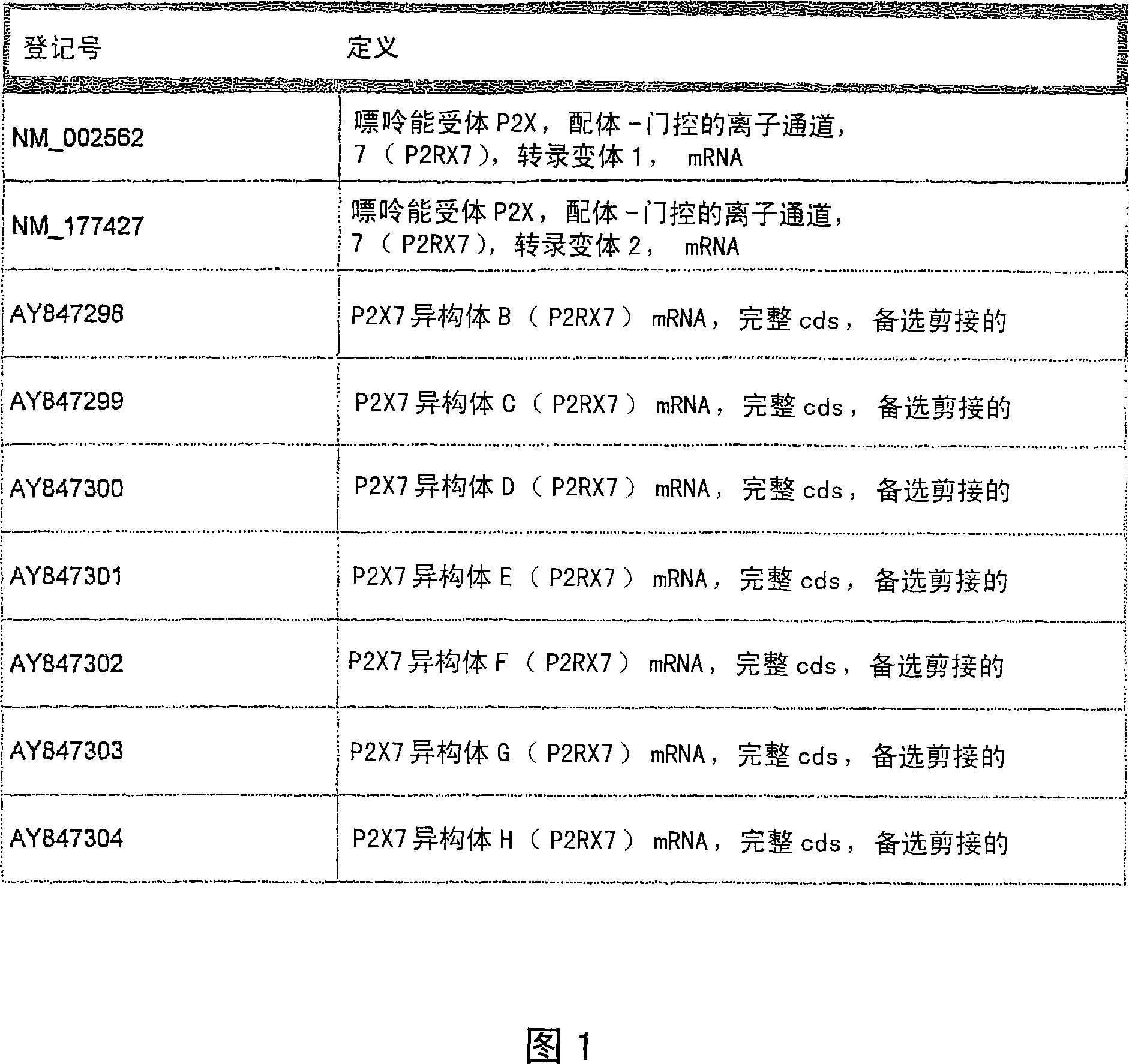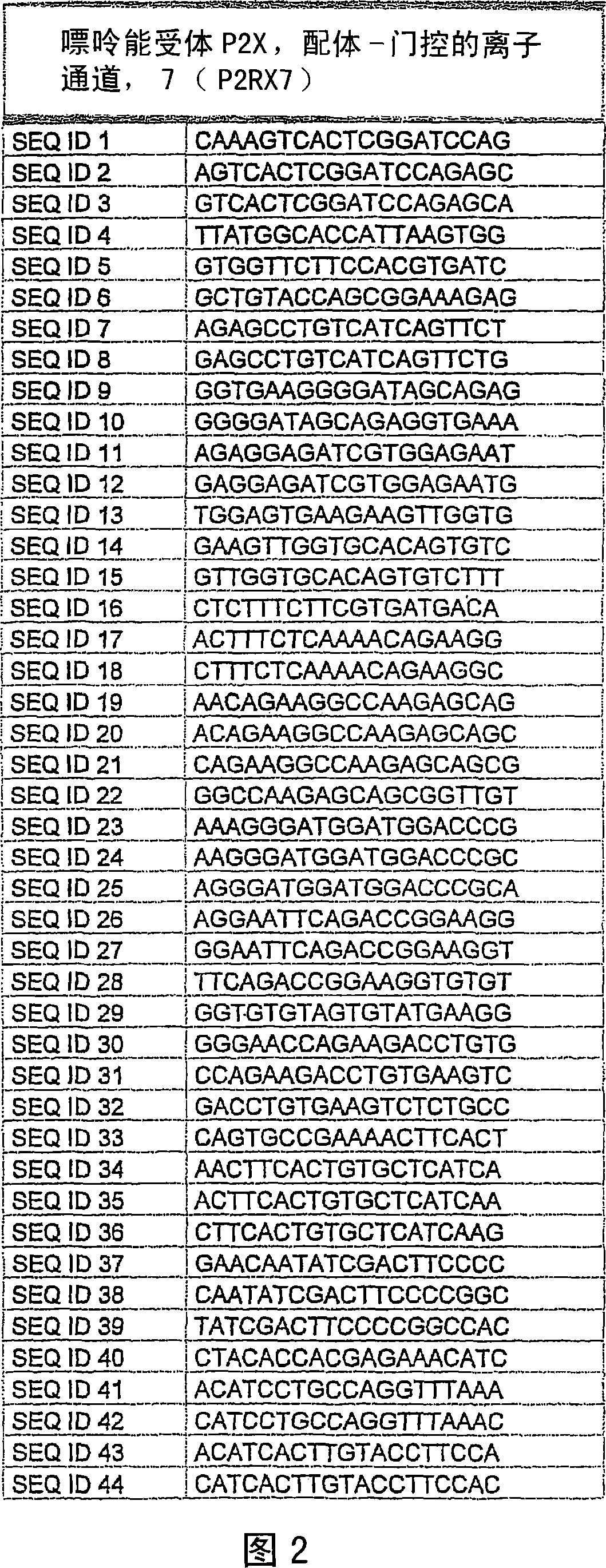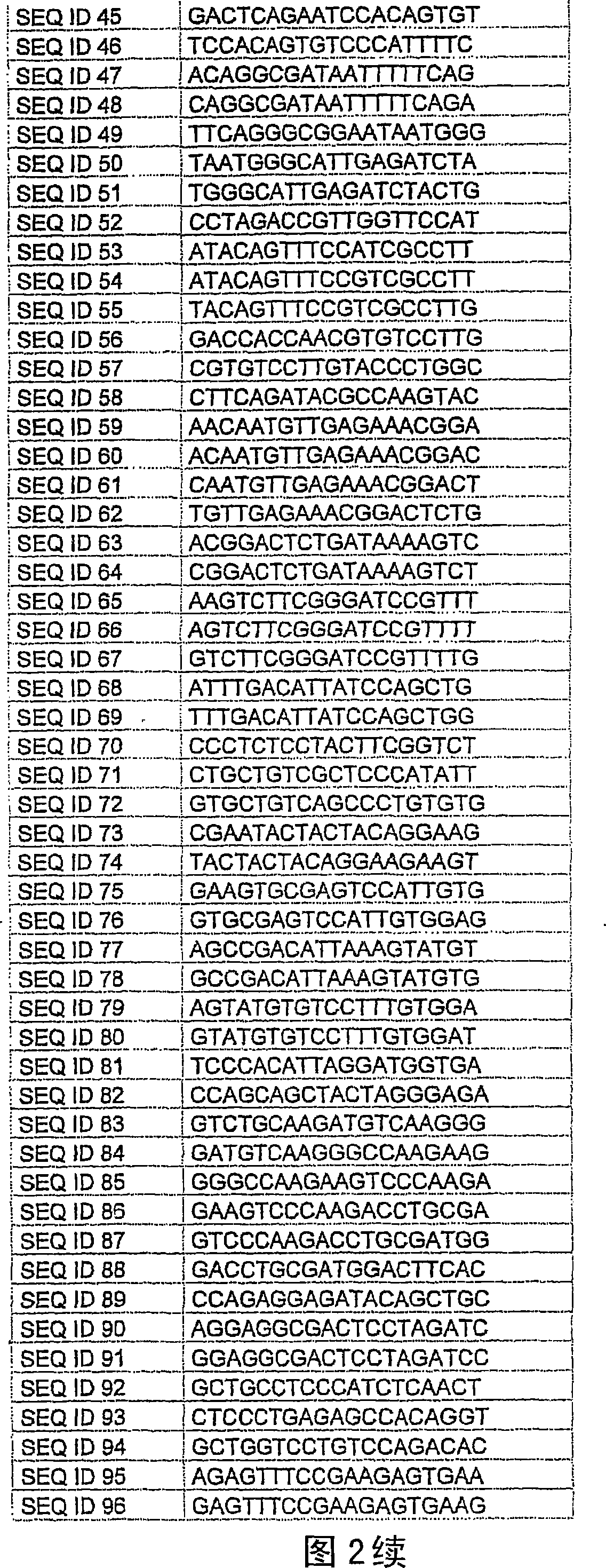Methods and compositions to inhibit p2x7 receptor expression
A composition and a technology for preparing drugs, which can be applied to receptors/cell surface antigens/cell surface determinants, pharmaceutical formulations, genetic material components, etc., and can solve problems that hinder application
- Summary
- Abstract
- Description
- Claims
- Application Information
AI Technical Summary
Problems solved by technology
Method used
Image
Examples
Embodiment 1
[0126] Example 1. In vitro detection.
[0127] A panel of siRNAs against P2RX7 target genes has been analyzed. The first step is to conduct experiments in cell culture. For the P2RX7 target gene, some siRNAs were designed using specific software according to the principles described previously. Those siRNAs with the best characteristics are selected for testing. siRNAs are used in cell cultures such as C2C12. The effects of siRNAs on target genes were analyzed by real-time PCR following the manufacturer's protocol. Gene target transcript levels were normalized using actin as a housekeeping gene. Some of the different siRNAs examined and their varying efficacy in on-target gene interference are included in Figure 3. RNA was prepared from C2C12 cells treated with different siRNAs for 48h. Samples were analyzed by real-time PCR using specific primers. The values represent the mean expression levels of the different transcripts normalized to actin relative to the cell con...
Embodiment 2
[0128] Example 2. In vitro time-dose response.
[0129] To verify the efficiency of siRNA2, more treatments were performed in C2C12 cells. Cells were transfected with siRNA2, and at 24, 48 and 72 h, P2RX7 transcript levels were analyzed by real-time PCR. At this time point subjected to siRNA treatment, transcript levels were significantly reduced. Figure 4 shows the means and their standard deviations of normalized mRNA P2RX7 levels relative to the percentage of control gene expression upon siRNA interference at each time point. And the siRNA dose response was analyzed. Figure 4 shows the results of 2 different siRNA applications (100 and 200nm). Application of 200nm siRNA was more effective than those of 100nm in P2RX7 downregulation, confirming the specificity and potency of the treatment.
Embodiment 3
[0130] Example 3. Organotypic cultures.
[0131] Before the application of siRAN in the spinal cord, we performed in vitro experiments using a model based on spinal cord slice cultures. In order to understand the complex processes that develop after initial trauma, it is necessary to use appropriate experimental models. This model facilitates the study of primary and secondary mechanisms of cell death that occur after spinal cord injury and represents a step ahead of studies of P2RX7 interference in mouse models. Several in vivo models have been characteristically used to study chronic pathologies. However, interpretation of results can be more difficult due to the complexity of in vivo systems, coupled with the prohibitively high cost of maintaining animal models. For the study of post-traumatic events, in vitro models are preferred because they allow precise control of the environment, as well as simplicity and reproducible access.
[0132] Prior to experimentation, cultu...
PUM
 Login to View More
Login to View More Abstract
Description
Claims
Application Information
 Login to View More
Login to View More - R&D
- Intellectual Property
- Life Sciences
- Materials
- Tech Scout
- Unparalleled Data Quality
- Higher Quality Content
- 60% Fewer Hallucinations
Browse by: Latest US Patents, China's latest patents, Technical Efficacy Thesaurus, Application Domain, Technology Topic, Popular Technical Reports.
© 2025 PatSnap. All rights reserved.Legal|Privacy policy|Modern Slavery Act Transparency Statement|Sitemap|About US| Contact US: help@patsnap.com



